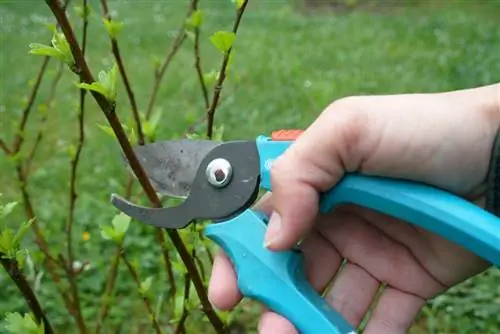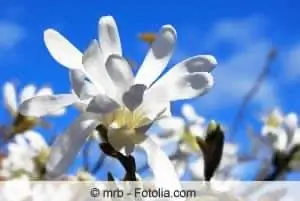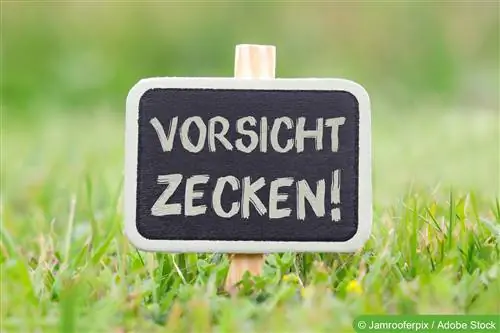- Author admin [email protected].
- Public 2023-12-17 03:39.
- Last modified 2025-01-24 12:45.
Experienced gardeners may know how to prune shrubs. Newbie gardeners or owners of newly planted species can find some tips on the topic here:
Tools for cutting bushes
Depending on whether you want to cut back a tree or a shrub, there are different tools. First of all, the gardener's equipment should be appropriate; a pair of gloves for gardening, as well as protective clothing and sturdy shoes, should be worn. As long as you are not handling a chainsaw, a helmet with vision and hearing protection is not necessary. These cutting tools can be used:
- Straight tooth saw
- Pruning Shears
- manual hedge trimmer
- electric hedge trimmer
Even if you don't necessarily have to cut back bushes with hedge trimmers, they can be helpful in certain situations. Normally you use a pair of good-cutting scissors that cut through the individual branches cleanly.
The different types of cuts
Regardless of when the shrub needs to be cut, there are different types of pruning that should be taken into account. Basically, shrubs should be cut as little as possible or only as much as necessary. It is the natural shape of the shrub that makes it a natural-looking shrub. Square-cut shrubs or radically pruned specimens may reflect the gardener's personal taste, but they do not give the plant a natural look. Where branches are disruptive, they can of course be shortened, especially before they could cause damage.
- The training cut is made on young trees to determine the shape, which can later only be determined by the
- Conservation cut is maintained. This ensures that the shape of the shrub remains and at the same time removes annoying or damaged branches.
- Rejuvenation pruning is a radical pruning that is carried out when the bush has not been pruned for a long time and is therefore woody and produces few flowers.
Time to cut
The best time to prune shrubs is early spring in February or March, before new growth begins. This stimulates many shrubs to grow and cutting creates space for new shoots.
Tip:
Radical cuts of bushes and hedges are only permitted from October to February.

The weather should be frost-free and pruning should be done as little as possible. Depending on which group the shrubs to be cut belong to, the type of cut also differs. If the shrub already has very strong shoots or branches that have grown inwards, it should also be cut inside so that more air can get in.
The appropriate time to cut depends on which shrub it is or what time of year it blooms. Due to the large variety of different shrubs, they are best divided into three groups:
Spring bloomers will form their buds the previous year, so they should be shaped after flowering. The dead parts are removed and the shoots are shortened.
- Magnolia
- Forsythia
- Hazel
- Rock Pear
- Ornamental quince
Summer bloomers can be cut back after the winter months; they produce their flowers on the fresh shoots. If they are cut in the summer after flowering, new growth can be stimulated.
- Spierbush
- Weigela
- buddleia (sea lilac)
- Lilac
- fingerbush
Evergreen shrubs are only cut when conspicuous areas appear. Diseased or dead branches are cut off when the inside of the branches is brown. Especially the evergreen shrubs like:
- Cherry Laurel
- Firethorn
- Rhododendron
- Ilex
- Privet
Can be cared for in this way, they have green buds, but there is no need to cut them. After the frost period in March, it can be assessed whether these shrubs have dead shoots. These are then cut back into the he althy wood, i.e. until the branch is green again inside. There are also some shrubs that don't want to be cut back at all. These include:
- Dogwood
- Magic Haze
- Daphne
- Rhododendron, garden azaleas
How to cut shrubs correctly?
Each shrub, tree or plant is pruned in a way that is specific to it. However, the cutting of bushes can generally be divided into fixed work steps, even if the timing and intensity may vary. It should be cut when:
- Dead, dry or frozen branches are present.
- Sick branches or parts of bushes, e.g. E.g. show mildew.
- Inwards growing shoots disturb the overall picture.
- A certain shape should be achieved.
- Shrubs that are too dense need to be thinned out.
- Shrubs that have grown too much must be reduced in size.
- Destroy clippings from diseased branches or bushes.
Cutting berry bushes
More and more garden owners not only want to plant ornamental trees in their garden, but also shrubs that offer fruit to enjoy. At the same time, they also provide a natural habitat for animals, they bloom beautifully in spring or early summer and also form a privacy screen for the garden. So why not blackberries, raspberries and the like.plant? However, berry bushes need to be pruned and each of them has a specific preference as to how this should be done. This increases next year's harvest and at the same time ensures that the bush remains he althy.
currants
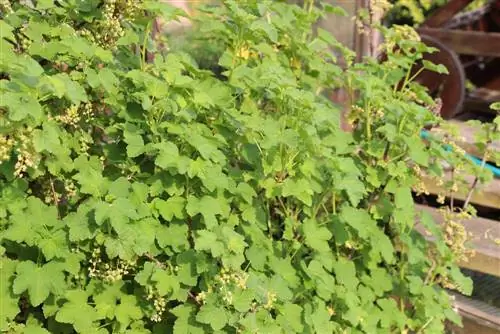
The best time to cut the currant bush is March. Then the bush does not yet have any leaves, so the entire structure of the bush can be clearly seen.
Tip:
Red and white currants fruit on perennial wood, black currants on annual wood. If the site conditions and climate are optimal, a currant bush can produce up to 40 new shoots. Of these, 5 of the strongest are selected, all others are cut off.
Gooseberries
Gooseberry bushes are pruned annually, similar to red/white currants. With this type of shrub, all branches that are already four or five years old are removed. You can recognize these because their wood is dark. The gooseberry also leaves four to five new shoots, so a good bush has 8 to 12 shoots that are no older than four years.
Raspberries
Raspberries are divided into summer raspberries and autumn raspberries. Raspberries are best kept upright between support wires, so you can see which branch needs to be removed. For summer raspberries, these are the harvested canes. From the canes growing next to each other, one is selected every 10 cm to bear fruit next year. The young canes in between are removed. The autumn raspberries are pruned on this year's fruit canes, which are cut off at the ground. Next year there will be raspberries on the new shoots.
Blackberries
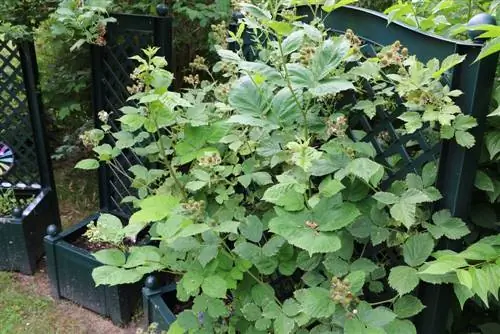
Blackberry bushes need to be trimmed regularly every year. The fruits form on the side shoots of last year's tendrils. The old fruit-bearing canes die back in winter and are cut off directly to the ground the next spring. The fresh-green young canes remain standing, their side shoots are shortened to 3-4 centimeters.
Once you have created and designed a garden, you must be aware that this garden also requires constant care so that the shrubs and plants can grow and thrive. Shrubs in particular need, in addition to good, nutrient-rich soil and sufficient irrigation, another factor that is very important for the proper growth of shrubs, i.e. for their he alth and strength - correct pruning.
What you should know in brief
Most bushes have to be cut back first so that their splendor can be fully appreciated. Nature has already sensibly coordinated the shape and growth of bushes, but if, for example, a bush that bears edible berries is cut back, it can bear fruit for the first time or much more in the second year after planting.
- The rule of thumb is that shrubs that bloom in summer are cut back quite deeply in March.
- Shrubs that bloom in spring are best pruned immediately after flowering.
- So-called strong-growing shrubs are slowed in growth by root pruning. This stimulates flowering.
- Old bushes can sometimes even be rejuvenated by cutting them out heavily.
- Annual shrubs usually receive a balanced structure when pruned for the first time. The main branches can be tied up.
- The following year, the sprouts growing inwards or outwards are cut back and dead or thin shoots are completely removed.
- Pruning mature plants is intended to maintain the harmony of the entire branch structure.
- For berry-bearing bushes, you should prune to expose the berries. This ensures that the berries have more sun to ripen.

